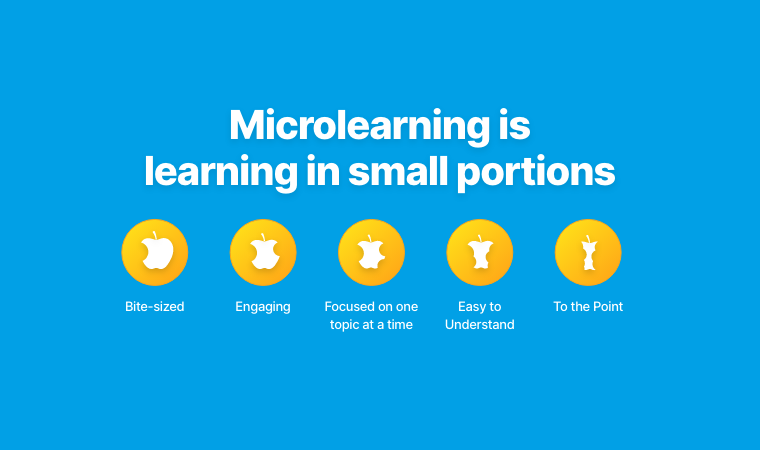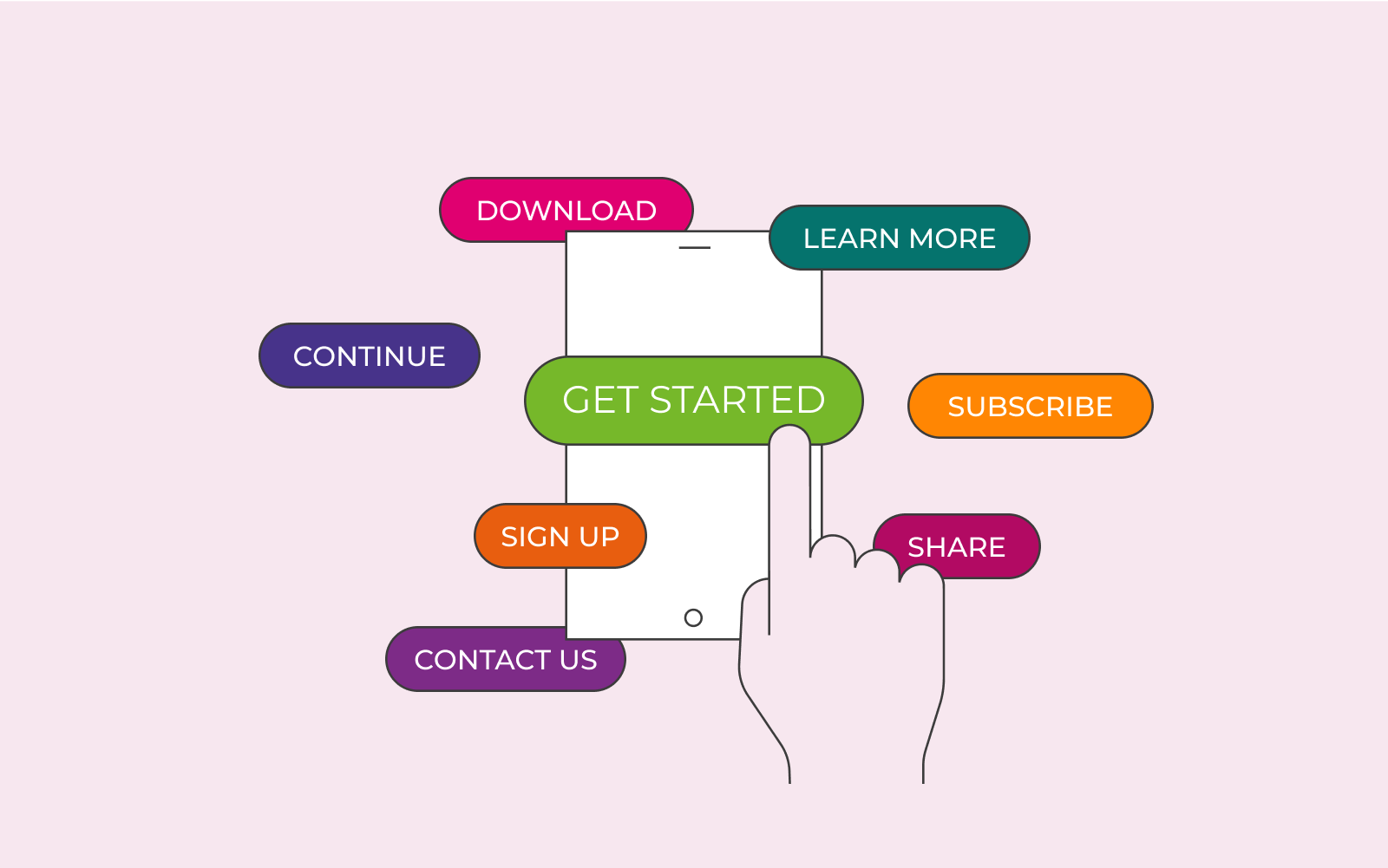In the whirlwind of today's business landscape, captivating your audience feels like a constant uphill battle. Attention spans are shrinking, yet the thirst for knowledge is stronger than ever. Enter microlearning videos – your secret weapon to unlock deeper customer engagement and propel your brand forward.
Discover the innovative power of microlearning videos as we unveil a treasure trove of strategies and techniques to elevate every facet of your customer journey. Get ready to ignite engagement, drive conversions, and leave a lasting impact through the captivating world of microlearning.
Elevate customer engagement with Bite-Sized Learning Experiences

In today's fast-paced world, capturing and retaining customer attention is more challenging than ever. Microlearning videos, with their concise and engaging format, offer a powerful solution for maximizing engagement by delivering information in easily digestible chunks. By breaking down complex concepts into bite-sized video content, you can cater to shorter attention spans and foster deeper learning. This is crucial in a business environment where microlearning video content has emerged as a powerful tool for captivating audiences.
Design:
Opt for a visually appealing design that aligns with your brand and resonates with your target audience. Incorporate high-quality graphics, animations, and concise text overlays to enhance the learning experience and maintain consistent video quality.
Elements:
- Use compelling visuals and captivating storytelling to draw viewers in and keep them engaged.
- Employ clear and concise language to ensure easy comprehension.
- Incorporate interactive elements like quizzes or polls to promote active participation.
- Add closed captions to cater to diverse learning preferences and accessibility needs.
- Optimize video length, keeping each segment focused on a single key concept for optimal microlearning effectiveness.
When to Select:
Choose this approach when you want to increase engagement rates, improve knowledge retention, and provide easily accessible information for busy professionals who prefer short-form video content.
Accelerate Product Adoption through Focused Microlearning Modules
Introducing a new product or feature can be daunting for customers. Microlearning modules provide a structured and efficient way to guide users through the learning process. Through targeted business videos, you can break down complex functionalities into digestible segments, accelerating product adoption and fostering user confidence.
Design:
Structure your modules logically, progressing from basic functionalities to more advanced features. Utilize a consistent visual style and branding across all modules to create a cohesive learning journey. Consider incorporating interactive simulations or guided walkthroughs within your micro-videos to enhance the learning experience and promote customer product knowledge enhancement.
Elements:
- Begin each module with a clear learning objective and concise overview.
- Provide step-by-step instructions or demonstrations of key features.
- Offer opportunities for practice and knowledge checks through quizzes or interactive exercises.
- Include downloadable resources or supplemental materials for further learning.
- Ensure videos are mobile-friendly for convenient access.
When to Select:
Ideal for launching new products, introducing feature updates, or providing ongoing customer support. Consider creating product demo micro-videos that highlight key benefits to expedite product adoption.
Drive Sales Conversions with Compelling Product Demo Micro-Videos

In a competitive marketplace, effectively showcasing your product's value proposition is essential for driving sales conversions. Micro-videos offer a compelling medium for delivering concise and impactful product demonstrations. You can use short video marketing strategies to highlight key features and benefits, capturing the attention of potential customers and nudging them towards a purchase.
Design:
Focus on a clear and concise narrative that emphasizes the unique selling points of your product. Showcase real-world use cases and demonstrate how your product solves a specific customer problem. Employ high-quality visuals, engaging animations, and a compelling call to action to maximize impact. Utilize cost-effective ways to create high-quality microlearning videos for optimal return on investment.
Elements:
- Start with a hook that grabs the viewer's attention and highlights the problem your product solves.
- Demonstrate the key features and benefits in a concise and engaging manner.
- Include testimonials or case studies to build credibility.
- End with a strong call to action that encourages viewers to learn more or make a purchase.
- Optimize your microlearning video content for various platforms to reach a wider audience.
When to Select:
When aiming to boost sales conversions, highlight new product launches, or provide easily accessible product information for potential customers.
Build Brand Authority by Sharing Expert Insights in Micro-Video Series
Position your brand as a thought leader and build trust by sharing insightful micro-videos featuring industry experts. These videos can provide valuable knowledge nuggets on relevant industry trends, challenges, and solutions, thus establishing your expertise. Micro learning video content becomes a powerful tool to showcase your brand's authority.
Design:
Opt for a professional, yet approachable format. Include high-quality visuals related to the topic, clear on-screen text to highlight key takeaways, and branded lower-thirds to reinforce your brand identity.
Elements:
- Expert Interviews: Conduct concise interviews with industry leaders and subject matter experts, distilling their knowledge into bite-sized videos.
- Explainer Videos: Use animation or motion graphics to simplify complex concepts and highlight key insights related to your business.
- Case Study Snippets: Share short video excerpts of successful customer stories, showcasing how your product or service delivered results.
- Thought Leadership Soundbites: Create impactful micro-videos featuring insightful quotes or predictions from your executives or industry thought leaders.
When to Select:
Utilize expert insight micro-videos to educate your audience, build credibility, and establish your brand as a go-to resource in your niche.
Improve Customer Satisfaction by Providing On-Demand Support Micro-Videos

Deliver instant support and resolve customer queries efficiently with a library of on-demand microlearning videos. These accessible video guides offer a convenient self-service option for troubleshooting common issues or learning about product features.
Design:
Create a visually consistent series with a clear structure, such as numbered steps or chapter markers, to aid navigation. Use screen recordings, animated demos, or close-up shots to demonstrate solutions effectively.
Elements:
- Troubleshooting Guides: Address frequently asked questions with step-by-step video tutorials.
- Feature Tutorials: Create concise videos explaining how to use specific product features effectively.
- FAQ Videos: Compile a collection of short videos answering common customer inquiries in a visually engaging format.
- Product Demo Snippets: Break down complex product demos into easily digestible micro-videos focusing on key features.
- Interactive Quizzes: Include short interactive quizzes within the videos to assess understanding and enhance engagement.
When to Select:
Deploy support micro-videos to improve customer self-service capabilities, reduce support tickets, and boost overall satisfaction.
Boost Customer Loyalty through Engaging Microlearning Programs on Product Updates
Keep customers informed and engaged by introducing new features and enhancements through microlearning video content. Delivering digestible, visual updates strengthens customer relationships and encourages product adoption.
Design:
Create a sense of excitement and anticipation by using dynamic visuals, background music, and clear, concise messaging. Focus on showcasing the benefits and value proposition of the updates.
Elements:
- New Feature Walkthroughs: Create concise tutorials showcasing the benefits and functionality of new product features.
- Product Update Summaries: Provide brief video recaps of key changes and improvements in each update.
- Behind-the-Scenes Glimpses: Offer exclusive sneak peeks into upcoming product development, fostering a sense of anticipation among users.
- Tips & Tricks Videos: Share bite-sized videos highlighting innovative ways to use updated features for greater productivity.
When to Select:
Use microlearning programs for product updates to encourage adoption, reduce support inquiries, and foster stronger customer loyalty.
Amplify marketing campaign Reach with Shareable Microlearning Videos

Boost the reach and engagement of your marketing campaigns by incorporating easily shareable micro-videos. Bite-sized videos designed for social media can deliver your brand message and attract a wider audience in an engaging format.
Design:
Prioritize high visual appeal, utilizing eye-catching animations, motion graphics, or cinematic footage. Keep the message concise and focus on a single, compelling takeaway. Ensure the video aligns with the platform's best practices (e.g., aspect ratio for Instagram Stories).
Elements:
- Product Teasers: Create short, engaging videos generating curiosity about your product or service.
- Promotional Offer Highlights: Share micro-videos promoting discounts, bundles, or special offers.
- Testimonial Snippets: Extract key quotes from customer testimonials and present them as impactful micro-videos.
- Behind-the-Scenes Footage: Give viewers a peek behind the curtain of your company culture or product development process.
- User-Generated Content Compilation: Showcase user-generated videos related to your brand or product in short, curated compilations.
When to Select:
Use shareable micro-videos to broaden your reach, drive social engagement, and generate buzz around your brand or campaigns.
Increase Lead Generation through Value-Packed Microlearning Videos on Landing Pages

Elevate your lead generation strategy by embedding valuable microlearning videos on landing pages. By providing relevant information and building credibility with engaging video content, you can entice visitors to convert into qualified leads.
Design:
Optimize your video for quick load times and a visually compelling format that grabs attention. Clearly communicate the video's value proposition in the first few seconds to keep viewers hooked.
Elements:
- Product Demo Videos: Showcase the core features and benefits of your product or service in a concise and engaging format.
- Explainer Videos: Simplify complex concepts or technical details through animated explainers tailored to your target audience.
- Customer Success Stories: Feature brief video testimonials highlighting the positive experiences and outcomes achieved by your existing customers.
- Problem/Solution Videos: Identify a common challenge faced by your target audience and demonstrate how your solution resolves it through a concise video narrative.
When to Select:
Incorporate microlearning videos on landing pages to increase engagement, improve conversion rates, and capture high-quality leads.
Improve Customer Retention by Offering Ongoing Microlearning Opportunities for Deeper Engagement
Foster ongoing customer engagement and strengthen loyalty by providing a continuous stream of microlearning opportunities. Regularly release bite-sized video content that empowers customers to derive greater value from your products or services, thereby maximizing retention rates.
Design:
Consider a subscription model, a dedicated resource hub, or regular email campaigns to deliver your micro learning video series. Opt for visually appealing formats that encourage consistent interaction, such as animated series or gamified quizzes.
Elements:
- Advanced Feature Tutorials: Help users explore lesser-known features and advanced functionalities through detailed video tutorials.
- Industry Best Practice Guides: Provide valuable insights and tips relevant to your customers' businesses or professional development.
- Q&A Sessions with Experts: Host short Q&A sessions with industry leaders or your product development team to address user questions and feedback.
- Case Study Deep Dives: Explore successful customer use cases in detail through mini-documentaries or interview-style videos.
When to Select:
Implement ongoing microlearning programs to encourage consistent engagement, build deeper product understanding, and cultivate long-term customer loyalty.
Gain a Competitive Edge by Implementing a Cutting-Edge Microlearning Video Strategy

Stand out from the competition and attract new customers by offering innovative and engaging micro-video learning experiences.
In today's fast-paced business landscape, capturing and retaining customer attention is more challenging than ever. Microlearning videos provide a unique opportunity to cut through the noise and deliver valuable information in a concise and engaging format. By creating a cutting-edge microlearning video strategy, businesses can differentiate themselves from competitors, position themselves as thought leaders, and build stronger relationships with their customers.
Design:
When designing your competitive microlearning video strategy, consider your target audience, industry trends, and the specific challenges your customers face. Focus on creating a diverse library of videos that cover a wide range of relevant topics, addressing their pain points, and providing solutions they can implement immediately. Keyphrase: business video content strategy
Elements:
- Concise and impactful videos: Keep your videos short, focused, and to the point. Delivering information in bite-sized chunks makes it easier for viewers to absorb and retain the content. Keyphrase: effective microlearning video content
- High-quality production: Invest in professional video production to ensure your content looks polished and engaging. High-quality visuals, clear audio, and captivating editing enhance the viewing experience and improve overall effectiveness. Keyphrase: high-quality business video production
- Interactive Elements: Incorporate interactive elements such as quizzes, polls, and branching scenarios to make your videos more engaging and encourage active participation. Keyphrase: interactive video content for business
- Mobile optimization: Ensure your videos are easily accessible and viewable on all devices, including smartphones and tablets. Mobile optimization is crucial as many viewers consume content on the go. Keyphrase: mobile-first microlearning video design
- Personalized content: Tailor your video content to specific customer segments based on their demographics, interests, or purchase history. Personalized videos resonate better with individual viewers, increasing their engagement and interest. Keyphrase: personalized video marketing content
Your Guide to Understanding

In the fast-paced business world, conveying complex ideas quickly and effectively is crucial. Microlearning explainer videos offer a powerful solution. They distill intricate concepts, products, or services into concise, digestible video content. This allows your audience to easily grasp the core message without feeling overwhelmed. Think of them as your secret weapon for crystal-clear communication, maximizing audience engagement, and driving knowledge retention.
Design:
Effective explainer videos prioritize visual storytelling. animated explainer videos are a great format for explaining abstract or complex topics, while using real-world video examples can effectively showcase product functionality in a clear and approachable manner. Employ a mix of visuals: animated characters or objects, engaging voice-over for clarity and consistent brand experience. You could add stock business video content where applicable or create video from images. Think whiteboard animation if text animation doesn't suit your purpose.
Elements:
- Visually Captivating: Draw your audience in with eye-catching visuals, icons, color palette that matches your business identity.
- Crystal-Clear Script: Keep the language concise and focused, free from industry jargon.
- Compelling Narrative: Craft a clear and engaging narrative arc that draws the viewer in.
- Memorable Music & Sound: Background music and well-timed sound effects subtly enhance audience experience.
When to Select:
Choose explainer videos when introducing a new product or service, breaking down complex technical processes for non-technical audience, educating about market research, or clarifying business values to both customers and partners. It's particularly powerful when creating video content for different levels of customer engagement journey (video content strategy).
Tutorial Videos
In today's tech-savvy business environment, tutorial videos are your gateway to simplifying complex processes. These short, focused micro learning videos break down tasks or procedures into step-by-step visual demonstrations, enabling viewers to actively acquire new skills. These help customers learn how to use products and solutions successfully leading to positive product experience. Tutorials build trust through knowledge sharing.
Design:
Tutorial video production typically consists of a screen recording. These feature a clear narration for business storytelling. Focus on close-ups for maximum impact. Ensure every step is visually documented with clear transitions. Screen annotation videos can enhance user understanding by directly demonstrating specific interactions.
Elements:
- Clarity in Narration: Make each instruction easy to hear and comprehend with an authoritative and natural-sounding voice-over.
- Precise Sequence of Steps: Divide a process into numbered stages for straightforward, step-by-step instructions.
- Visual Markers & Signals: Enhance learning and reinforce key takeaways by utilizing visual aids like arrows, icons, and highlighting text for effective business marketing video content.
- Strategic Close-Ups: Enhance visuals with magnified segments demonstrating crucial maneuvers or interactions in the workflow.
When to Select:
Choose the tutorial approach for employee upskilling via internal knowledge sharing through short videos, or sharing knowledge insights via free access channels (freemium). Teach customers how to use new features. Explain different onboarding stages with customer onboarding video to streamline their product interaction and increase their chances of successful product utilization and customer stickiness.
Process Videos

For businesses looking to illuminate intricate workflows or system structures in a straightforward manner, process videos are your solution. This dynamic format creates clear and visually engaging walkthroughs. Effective and efficient communication on how things work improves your brand experience by keeping people on the same page, enhances internal and external knowledge, improves communication, helps explain complex details.
Design:
Create video presentations, utilizing flowcharts, animated business process illustration, or even simulations of real business processes using screen capture tools. Aim for a smooth step-by-step process illustration, revealing layers of complexity with clarity.
Elements:
- Clear Visualization of Complexity: Replace lengthy explanations with readily understandable visuals.
- Compelling Visual Aid Descriptions: Support your graphics with a concise and straightforward voice-over for enhanced clarity and consistent branding.
- Progressive Step Illustration: Introduce each stage seamlessly to illustrate a process from its beginning to its successful conclusion.
- Appealing Infographics with Smooth Transitions: Entice your audience with attractive infographics and animated diagrams that smoothly progress through different phases of the depicted process or concept.
When to Select:
Simplify complicated manufacturing methods or provide clarity about internal systems within an organization's various levels or branches. Use explainer video and tutorial format to cover both the basic level and the process level detail to enhance viewer learning and product awareness. Process micro learning video for employee development.
Scenario-Based Micro Learning Videos
Scenario-based microlearning videos offer a powerful way to engage your audience by presenting realistic challenges and solutions within a concise format. This immersive approach to video content facilitates a deeper understanding of complex business concepts by contextualizing them in relatable situations.
Design:
Leverage either live-action footage or animation to depict a relevant scenario related to your business objective. This can involve customer interactions, problem-solving exercises, or demonstrations of best practices in a specific industry niche.
Elements:
- Relatable Characters: Create characters that your target audience can easily identify with, mirroring their roles, challenges, and aspirations.
- Engaging Storyline: Develop a narrative arc that keeps viewers invested, offering a clear conflict, rising action, and resolution.
- Realistic Dialogue: Craft dialogue that reflects authentic conversations within a professional setting.
- Clear Illustration of Best Practices: Demonstrate effective techniques and strategies for navigating the presented scenario.
- Concise and Focused Storytelling: Ensure the scenario stays within the confines of microlearning, providing a complete narrative in a short timeframe.
When to Select:
Scenario-based videos are particularly effective for training on soft skills, conflict resolution, handling customer objections, demonstrating product use cases, or providing insights into industry-specific challenges.
Whiteboard Animation for Microlearning
Whiteboard animation videos offer a visually captivating and engaging way to explain abstract or complex business concepts within the microlearning framework. This technique leverages the power of visual storytelling to simplify intricate ideas and make them more accessible.
Design:
Employ time-lapse drawing on a whiteboard synchronized with a clear and concise narration. The visuals should evolve as the story unfolds, capturing attention and promoting knowledge retention.
Elements:
- Engaging Visuals: Utilize hand-drawn illustrations, icons, and text to visually represent key concepts.
- Clear and Concise Narration: Develop a script that delivers information in a clear and digestible manner, complementing the visuals.
- Simple and Memorable Drawings: Prioritize clarity over complexity in the illustrations, focusing on essential elements that convey the core message.
- Visual Metaphors and Analogies: Leverage visual metaphors and analogies to make abstract ideas more concrete and relatable.
- Strategic Use of Color and Motion: Employ color and motion to highlight key points, direct attention, and enhance visual appeal.
When to Select:
Whiteboard animation is ideal for explaining abstract concepts, technical processes, outlining strategic frameworks, conveying financial data, or delivering concise overviews of complex topics.
Animated GIFs and Short Loops

Animated GIFs and short looping videos provide a quick and effective way to convey key information or demonstrate simple actions within the constraints of microlearning. These concise visuals are ideal for reinforcing learning points or highlighting specific features without overwhelming the learner.
Design:
Create short, seamless animations that loop continuously without the need for sound. The visuals should be clear, concise, and easily understood at a glance.
Elements:
- Visually Compelling Imagery: Utilize eye-catching graphics and animations that grab attention.
- Clear and Concise Message: Focus on a single key takeaway or action that can be communicated quickly.
- Simple and Straightforward Design: Avoid overly complex animations that detract from the core message.
- Effective Use of Color and Contrast: Utilize color and contrast strategically to draw the viewer's eye and emphasize key elements.
- Seamless Looping Transition: Ensure the animation loops smoothly without any noticeable breaks or jumps.
When to Select:
Animated GIFs and short loops are useful for quick reminders, showcasing product features, demonstrating small tasks, summarizing key insights, highlighting steps in a process, or providing visual cues within a larger microlearning module.
Screencast Videos
Screencast videos are a powerful way to deliver micro learning content directly to your audience. By capturing and narrating actions on a computer screen, you can simplify complex processes and software interactions into easily digestible chunks. This type of business video is particularly effective for technical training, product demos, or troubleshooting guides, ensuring your video content is engaging and insightful.
Design:
The foundation of a successful screencast is a high-quality screen recording, utilizing tools that capture crisp visuals and audio. Incorporate a clear voiceover that guides viewers through the steps or information being presented. Add visual aids like annotations, highlights, and zoom-ins to draw attention to specific areas and enhance clarity.
Elements:
- Concise narration: Get straight to the point and avoid unnecessary jargon. Your video content should respect the viewer's time and deliver maximum value in minimal time.
- High-quality audio: Ensure the audio is crisp and clear, eliminating any background noise that can distract viewers from the micro learning experience.
- Clear visuals: Optimize screen resolution and use annotations strategically to highlight key elements.
- Engaging delivery: While conciseness is key, maintain a friendly and engaging tone in your narration. This prevents the business video from feeling dry or monotonous.
- Targeted instructions: Ensure each step is presented clearly and sequentially. Consider adding visual cues like arrows or numbering to aid understanding.
When to Select:
Opt for screencast videos when demonstrating software functionality, explaining complex technical procedures, or providing step-by-step guides on using online tools. Screencasts are especially effective for micro learning focused on practical applications.
Micro-Lectures
Micro-lectures are a concise and effective way to deliver core concepts or key information to your audience. This format of micro learning video is ideal for presenting insights, summarizing research findings, or explaining industry trends.
Design:
The typical micro-lecture features a presenter speaking directly to the camera, supported by visually appealing slides or graphics. This format mimics the traditional lecture style but in a condensed and more focused format, perfect for quick bursts of business content.
Elements:
- Expert Speaker: Choose a knowledgeable and engaging presenter who can deliver information authoritatively and captivate viewers.
- Strong Visuals: Slides or graphics should be visually appealing and support the speaker's message, not overwhelm it.
- Clear Structure: The video content should follow a logical flow, ensuring a seamless micro learning experience. Introduce the topic, expand on key points, and provide a concise summary or conclusion.
- Engaging Delivery: The presenter's delivery is crucial in holding the viewer's attention. Maintain a conversational tone and use vocal variety to emphasize important points.
- Call to Action: Consider ending with a clear call to action that encourages viewers to engage further with your business or explore related micro learning videos.
When to Select:
Choose micro-lectures when explaining key concepts, sharing industry best practices, providing training on new regulations or policies, or introducing a new product or service. They are a great way to offer valuable micro learning moments in a formal, yet engaging, style.
Knowledge Base Videos

Knowledge base microlearning videos act as short, engaging supplements to your existing knowledge resources. They can reinforce key concepts, clarify complex processes, or address frequently asked questions, boosting audience engagement and knowledge retention in a visually compelling way.
Design:
Structure your knowledge base micro learning videos around a specific topic or problem. Consider a concise, narrative-driven approach that seamlessly integrates text overlays, animations, or screen recordings to illustrate complex procedures or data.
Elements:
- Clear and Concise Explanations: Break down complex information into digestible chunks, focusing on clarity and simplicity. This might include using accessible language, real-world examples, and relatable business scenarios.
- Visual Aids and Demonstrations: Integrate screen recordings, animations, or diagrams to illustrate concepts visually, enhancing comprehension and making the video content more memorable.
- Interactive Elements: Encourage active participation by incorporating interactive elements like quizzes, polls, or branching scenarios, further reinforcing knowledge and keeping viewers engaged.
- Strong Call to Action: Direct viewers to further resources, such as detailed articles in your knowledge base, related microlearning video content, or even a contact point for additional support.
- Accessibility Features: Include captions or transcripts for accessibility, making your knowledge base microlearning video content accessible to a wider audience.
When to Select:
Knowledge base microlearning videos are ideal when aiming to reinforce existing knowledge, explain intricate processes, or clarify common customer questions regarding your business products or services. This approach proves especially valuable when you're working with large volumes of information, as microlearning helps improve comprehension and memory retention.
Interview Snippets
Harness the power of thought leadership by incorporating interview snippets into your microlearning video strategy. These short, engaging clips offer valuable insights from industry experts or satisfied customers, enhancing your credibility and making complex topics relatable for your target audience.
Design:
Utilize a clean and professional background setting. Incorporate lower thirds to introduce interviewees and their credentials. Emphasize quality audio and visuals. Focus on capturing compelling soundbites from the interviews.
Elements:
- Expert Selection: Feature interviewees with recognized expertise in your business's specific industry niche. Their knowledge and credibility can effectively promote your brand as a reliable source of information and add weight to your video content.
- Concise and Relevant Insights: Ensure the interview snippets address a specific topic directly related to your business offerings or industry trends. Frame questions to elicit concise yet impactful answers. Edit the clips to retain only the most compelling insights.
- Visual Branding: Subtly incorporate your company logo and branding elements throughout the interview snippet microlearning videos to promote brand recognition. However, ensure your branding doesn't overshadow the content.
- Engaging Storytelling: Consider integrating a narrative structure to connect different interview snippets and weave them into a compelling storyline that highlights diverse perspectives within your chosen theme.
- Mobile-First Optimization: Make sure these microlearning videos are easily accessible and enjoyable for viewers across multiple devices, including smartphones and tablets. Optimize for mobile bandwidth and viewing conditions.
When to Select:
Choose this microlearning video approach when looking to humanize your brand, offer different viewpoints on complex issues, showcase social proof through customer testimonials, or convey thought leadership. They're especially effective for content exploring broader industry themes and can spark engaging discussions within your target audience.
Flashcard Videos
Reinforce core concepts and promote active recall with the power of flashcard microlearning videos. These bite-sized video learning aids utilize simple visuals and concise text to create a highly engaging method for knowledge absorption and retention, perfect for presenting crucial facts, industry-specific terminology, or key performance indicators relevant to your business.
Design:
Incorporate visually appealing color schemes and graphics. Focus on simple and impactful design layouts. Include clear definitions and key examples to ensure your content is suitable for business-oriented scenarios.
Elements:
- Clear and Concise Text: Opt for short and memorable definitions for every term. Use easily legible fonts and clear visuals. Keep the design aesthetically pleasing to optimize the audience's learning experience.
- Audio Reinforcement: Consider incorporating audio narrations for each term to cater to various learning styles. Use high-quality sound to create microlearning videos that provide a professional and engaging learning experience.
- Interactive Review Modes: To promote active participation, consider creating variations of your microlearning video content. For example, you might produce versions without answers for a self-paced learning experience or add mini-quizzes between flashcards for immediate recall assessment.
- Progressive Complexity: Sequence flashcard videos from introductory level to more complex topics within your specific industry niche, to encourage viewers to systematically progress their business-relevant knowledge through different learning levels.
- Gamification Elements: Integrate a reward or points system into the flashcard microlearning video experience to incentivize consistent viewing, track audience engagement, and maintain viewer motivation throughout your designed business learning curriculum.
When to Select:
Flashcard videos excel at establishing fundamental understanding and driving knowledge retention for business professionals. Use them when introducing new concepts, technical jargon, essential business models, or core facts that are critical to comprehension of more complex microlearning video content offered by your business.
Case Study Videos

Showcase the impact of your products, services, or initiatives with engaging microlearning case study videos. These videos condense real-world business success stories into easily digestible formats, showcasing compelling examples, tangible results, and best practices for other organizations within your niche.
Design:
Implement storytelling techniques like engaging testimonials, interview excerpts, data visualizations, or behind-the-scenes glimpses of client interactions to capture viewer attention and add weight to your success story. Focus on capturing audience attention in the first few seconds to keep viewers interested.
Elements:
- Clear Problem Statement: Start with a concise presentation of the initial challenge or problem a business or client was facing within the specific scenario related to your services. Make sure the problem statement is immediately relatable to your target business executive audience.
- Solution Implementation: Explain how your business offerings addressed this challenge with a tailored approach or an innovative solution, clearly presenting your product's role and showcasing its impact on solving the initial problem.
- Measurable Results: Showcase quantifiable results and impacts from employing your service within the presented scenario. Emphasize key business metrics improved, challenges overcome, and client satisfaction within a specific timeframe to further validate your service and resonate with other business leaders seeking a similar solution.
- Call to Action: End your case study microlearning videos with a strong call to action tailored to specific business personas who are looking for solutions highlighted in the presented story. This can include offering downloadable resources, demo signup buttons, scheduling a call option, or similar relevant elements to engage potential leads within your business pipeline.
- Integration with Other Content: Extend your microlearning case study's effectiveness by repurposing snippets into different formats like social media previews or using the core story in different forms within other marketing channels or internal sales resources to ensure consistent brand messaging.
When to Select:
Case study microlearning videos become invaluable when you aim to demonstrate success, increase customer trust, build social proof, or generate qualified leads for your business. Integrate these case studies with other content, create variations within similar business segments for audience targeting, and measure impact on customer engagement to evaluate their effectiveness.
Data Visualization Videos

Transform raw data into visually impactful stories with microlearning data visualization videos. Simplify complex figures, industry statistics, or business forecasts into engaging videos that highlight trends, explain key performance indicators (KPIs), and foster audience engagement and information retention by adding a visually compelling dynamic layer to raw data and information.
Design:
Craft a clear and concise narrative focusing on one core business takeaway to simplify comprehension and knowledge retention. Ensure text and visualizations are easily viewable and legible for optimized accessibility, use relevant visuals for effective audience connection with your core message.
Elements:
Visual Consistency: Use cohesive color palettes, clear chart annotations, easily identifiable patterns to help viewers quickly absorb data, avoiding cognitive overload.
Focused Storytelling: Each chart or graph included in a microlearning data visualization video should help in the presentation of one data story with the main objective to present actionable takeaways from information presented rather than creating an overly complex design with different data points highlighted throughout the video content.
Progressive Disclosure of Information: Introduce data elements gradually for better audience focus and optimal information retention, use transition effects creatively to guide the audience’s attention through visual cues and ensure clarity.
Mobile Optimized Charts: Design visualizations considering multi-platform usability, ensuring consistent display and effective use of smaller screen size limitations. Include transcripts or accessibility support for optimal comprehension by a diverse target audience.
Creative Transitions: Smooth transitions between visuals, add audio effects, voice narration for audience focus and attention management within your microlearning videos to avoid overstimulating the audience and maintaining focus on the presented information at each step of the visual journey created within a video.
When to Select:
These data-focused microlearning video tools become especially useful when working with complex statistical information for reporting to investors, when conducting in-depth market analysis, visualizing audience engagement trends, understanding and demonstrating changes in different performance indicators throughout the defined timeline, and creating accessible explainers for different segments of your business or customer profiles.
Tips & Tricks Videos
Empower your target audience with quick, actionable tips & tricks microlearning videos designed to help viewers resolve issues, boost productivity, and gain specific, niche skills, increasing engagement by delivering immediate, hands-on value for your business's clients and prospects.
Design:
Start with the presentation of a problem statement relevant to your target audience and explain one or a few steps to provide a quick solution, ending with a positive outcome after taking suggested action in a concise format and easy-to-follow structure.
Elements:
Targeted Problem-Solution Focus: Choose specific challenges or knowledge gaps your business customers commonly face. Emphasize efficiency of a proposed solution by providing clear action steps to effectively address the highlighted problem.
Demonstrative Approach: Emphasize “show, don’t just tell” methodology by focusing on visual aids to ensure higher knowledge retention, presenting step-by-step instructions.
Use Case Specific Examples: Connect each tip with real-world use cases to showcase the impact on customer’s experience or different workflow optimization strategies, ensuring the solution aligns with relevant problems for your specific business audience and presenting real use scenarios to connect with viewers.
Time Optimization: Short video content is a key to engagement and knowledge retention within a specific micro learning niche. Each tip or trick explained should be structured in a quick to absorb format for higher view-through rates and easy engagement in micro learning with longer retention rates.
Incorporate Captions/Subtitles: Increase accessibility and engage multiple learning style types with video design principles such as consistent caption quality and ensuring high quality transcripts, especially when focusing on action tips where the audio can play a significant part in the viewers’ experience.
When to Select:
Tips & Tricks video content is specifically targeted at immediate impact and is very valuable for addressing common user questions about specific services offered by your business or your specific niche products, onboarding tutorials, sharing workflow optimizations or actionable advice for improving team effectiveness or user experience with a very fast turnaround on value for each presented technique.
Craft Compelling Video Titles That Spark Curiosity and Drive Clicks
In the realm of microlearning video for business, your video title serves as the initial touchpoint with your audience. It's the virtual handshake that can either pique their interest or cause them to scroll past. A strong, curiosity-inducing title is paramount in driving engagement with your business content.
Design:
Keep titles concise, ideally within 6-10 words, highlighting the core benefit or learning takeaway of the video. Employ strong action verbs and numbers to convey value proposition and urgency.
Elements:
Benefit-driven language:
Use phrases like Master X Skill in 5 Minutes or Discover 3 Secrets to Boost Your Sales.
Specificity:
Address a specific audience need or pain point directly in the title (e.g., ""Content Marketing Strategies for Small Businesses"").
Intrigue:
Pose a thought-provoking question or highlight a surprising statistic to entice viewers to click.
When to Select:
Always prioritize compelling titles when producing microlearning business content. The ability of a title to attract clicks directly impacts the reach and effectiveness of your video marketing strategy.
Begin Each Microlearning Video with a Hook That Grabs the Viewer's Attention

Think of the opening seconds of your microlearning video content as a ""hook"" akin to a captivating introduction in a presentation. This crucial moment determines whether viewers will continue to invest their limited time in your business video or quickly move on.
Design:
Start with a bang – utilize a surprising statistic, a powerful visual, or a relatable anecdote that instantly connects with your audience and compels them to continue watching.
Elements:
Visually compelling opening:
Start with high-quality footage, motion graphics, or a visually striking image that immediately captures attention.
Strong statement/question:
Pose a thought-provoking question that directly relates to the viewer's need or challenge.
Anecdote/story:
Use a short, engaging narrative that quickly connects with the viewer emotionally.
When to Select:
Implementing a strong hook is essential for all microlearning videos designed for business audiences. Given the short format and abundance of competing content, capturing attention immediately is paramount.
Focus on One Key Learning Objective per Microlearning Video for Maximum Impact

In the context of business microlearning, less is often more. Each microlearning video content should deliver a focused, digestible learning experience. Resist the urge to pack too much information into a single video, as it dilutes the core message and hinders knowledge retention.
Design:
Identify a single learning objective – a skill, concept, or takeaway that you want viewers to grasp from each video. All information and visuals should align with this objective.
Elements:
Clarity of objective: Clearly state the learning goal at the beginning of the video.
Targeted content: Include only information directly relevant to the chosen objective.
Concise explanations: Keep explanations brief and straightforward, using visual aids to illustrate complex points.
When to Select:
This principle is fundamental to all effective microlearning videos for businesses. It's particularly crucial when tackling complex topics, ensuring that learners absorb core concepts before moving to advanced material.
Utilize High-Quality Visuals and Graphics to Enhance Engagement and Understanding
In the visually driven world of online learning, the production value of your microlearning video content is critical. High-quality visuals contribute to a professional image and, more importantly, significantly enhance comprehension and memory retention.
Design:
Incorporate visually engaging elements that supplement and enhance the spoken message.
Elements:
High-resolution footage: Use professionally shot footage or stock videos relevant to the topic.
Custom animations: Explain complex ideas using simple and clear animations.
Infographics and data visualizations: Present statistics and data in an easily digestible format.
When to Select:
This design principle is applicable to all microlearning video content aimed at boosting business outcomes. Especially beneficial when: explaining abstract concepts, simplifying data, and creating a lasting visual impact.
Leverage Storytelling Techniques to Make Microlearning Videos More Memorable

Connect with viewers emotionally by incorporating relatable characters, scenarios, and narratives that illustrate key concepts.
Storytelling is a powerful tool for engaging viewers and enhancing knowledge retention in microlearning videos. By crafting compelling narratives that resonate with your target audience, you can transform dry information into memorable learning experiences.
Design:
Before scripting your microlearning video content, define your target audience and identify the key message you want to convey. Develop a narrative arc that presents a challenge or problem, introduces a relatable character facing that challenge, and showcases how your product or service helps overcome it.
Elements:
Relatable Characters: Craft characters that resemble your ideal customer in terms of their industry, job role, and challenges faced. This will make it easier for viewers to connect with the narrative and visualize themselves in a similar situation.
Realistic Scenarios: Present challenges or problems that are familiar to your audience. Authenticity strengthens the narrative's impact and allows viewers to see the practical applications of your message.
Emotional Connection: Engage viewers on an emotional level by using evocative language, music, and visuals that trigger positive feelings, curiosity, or a sense of urgency. This strengthens the viewer's connection with the content and improves memory retention.
Clear Resolution: Show how the challenge presented is overcome, demonstrating the value and effectiveness of your product or service. End on a positive note, leaving viewers with a sense of accomplishment and a clear understanding of the key takeaways.
When to Select:
This approach is particularly effective when dealing with complex topics or abstract concepts. Weaving information into a story makes it more digestible, memorable, and engaging for your viewers, driving stronger learning outcomes and impacting their business decisions positively.
Incorporate Interactive Elements like Quizzes and Polls to Enhance Active Learning

Encourage participation and reinforce knowledge retention through interactive features that engage viewers throughout the video.
Microlearning videos can benefit significantly from incorporating interactive elements, promoting active participation from your business viewers and boosting knowledge retention. Features like quizzes, polls, and clickable hotspots elevate the viewing experience and deepen the viewer's understanding of the information presented.
Design:
Plan where interactive elements will be integrated within your video based on the content's natural breaks or key takeaways. Carefully construct the quizzes and polls, ensuring the questions directly test the viewer's understanding of the material presented. Consider using gamification techniques, such as progress bars, point systems, or badges to incentivize participation and increase motivation.
Elements:
Quizzes: Insert quizzes at strategic points within the video to reinforce key concepts or check viewers' understanding of specific sections. Include multiple-choice, true or false, or short-answer questions to effectively evaluate knowledge absorption.
Polls: Use polls to gauge viewer opinions or gather feedback on the topic. This real-time interaction fosters a sense of community and encourages active participation.
Clickable Hotspots: Embed clickable elements within the video, leading viewers to supplementary information or external resources related to specific concepts. This facilitates exploration and deepens knowledge on particular areas.
Branching Scenarios: Implement scenarios where viewers make choices that dictate the video's course. These ""choose-your-own-adventure"" pathways tailor the experience, offering unique learning paths based on individual choices.
When to Select:
Incorporate interactive elements into your business video content when seeking deeper audience engagement, higher retention levels, or valuable viewer feedback. This approach fosters a more interactive learning environment compared to passively consuming traditional video content. For example, an engaging quiz could test a potential client's understanding of their own cybersecurity vulnerabilities before presenting the benefits of your company's cybersecurity micro learning video solutions.
End Each Microlearning Video with a Clear Call to Action to Drive Desired Outcomes

Direct viewers towards the next step, whether it's exploring related content, signing up for a newsletter, or making a purchase.
Effective micro learning videos always provide clear guidance for viewers to take the next step in their journey. Incorporating strong calls to action (CTAs) maximizes your video content's value and enables you to steer viewers toward desired business outcomes, like lead generation, customer acquisition, or deeper engagement.
Design:
Determine your primary goal for each micro learning video. Do you aim to guide viewers toward a specific webpage, generate leads for your business, promote a free trial, or initiate a sales conversation? Tailoring your CTA to this goal is crucial. Use impactful visuals and concise text that communicates the intended action clearly.
Elements:
Clickable Buttons: Include visually prominent buttons within your video, clearly labeled with the desired action. Integrate these buttons directly into the video interface, rather than relying solely on external links in the video description.
Verbal Prompts: Use a strong and clear verbal cue to direct viewers toward your CTA. Enunciate your message effectively and create a sense of urgency or excitement around the next step.
On-Screen Text: Reinforce your verbal CTA with text appearing on-screen that further explains or visually highlights the next step. Utilize attention-grabbing fonts, colors, and animation effects.
Limited Choices: Present no more than two primary CTAs per video. Presenting too many options can confuse viewers or diminish the impact of each CTA.
When to Select:
Incorporate strong CTAs at the conclusion of each micro learning video, directing your business' viewers toward further exploration. Utilize them strategically to lead potential clients to relevant case studies on your website, guide customers towards in-depth product demonstrations, or provide opportunities for signing up for your business newsletter filled with valuable micro learning video content.
Optimize Microlearning Videos for Search Engines with Relevant Keywords and Metadata

Increase visibility and discoverability by incorporating targeted keywords in video titles, descriptions, and tags.
Microlearning videos play a crucial role in a successful online business strategy. Like any digital content, maximizing your micro learning videos' visibility via search engine optimization (SEO) is essential to expanding your reach and enhancing discoverability among potential clients and customers.
Design:
Prior to producing your video, thoroughly research the keywords your target audience is likely using to search for information related to your topic or industry. Use keyword research tools, study your competitors' strategies, and conduct surveys or interviews to gain valuable insights into relevant keyword phrasing.
Elements:
Keyword-Rich Titles: Create compelling video titles that include highly searched keywords your business wants to be associated with. Front-load your most valuable keywords in the title whenever possible.
Descriptive Descriptions: Compose detailed and keyword-rich video descriptions. Include your most important keywords strategically and organically throughout the description text.
Relevant Tags: Select a variety of relevant keywords as tags, optimizing your micro learning videos for discovery by search algorithms. Utilize both broad and specific keywords.
Transcripts and Closed Captions: Include complete video transcripts or accurate closed captions. These features increase accessibility while allowing search engines to crawl and index the entire video content.
When to Select:
Always incorporate targeted keyword research and appropriate SEO metadata into your micro learning video workflow for maximum impact. Enhancing search visibility across popular platforms, like YouTube or Vimeo, strengthens your business' overall brand awareness, drives more potential clients to your valuable video content, and improves your company's digital reach in an increasingly competitive online space.
Promote Microlearning Videos Across Multiple Channels to Reach a Wider Audience
Share your content on social media, embed videos on your website, and incorporate them into email marketing campaigns for maximum exposure.
Producing engaging micro learning video content is merely the first step. Driving viewership and impact requires strategically promoting your videos through various online channels to reach your intended audience and drive stronger results for your business.
Design:
Before launching your video, devise a detailed promotional strategy outlining your business' specific goals, target audience demographics, and budget constraints. Develop a customized content calendar indicating the optimal times and channels for each micro learning video release.
Elements:
Social Media Marketing: Promote your micro learning videos across social media platforms frequented by your target audience, using compelling captions and relevant hashtags. Consider creating tailored short trailers or video snippets for each platform's unique requirements.
Website Integration: Embed your videos directly within your website's pages, including your homepage, blog, resources sections, and relevant landing pages. Integrating videos directly into your business website boosts user engagement and enhances SEO efforts.
Email Marketing Campaigns: Include links to your videos or embed snippets directly within your emails. Promote newly launched videos to nurture your existing leads and clients, keeping them updated with relevant, engaging micro learning video content.
Paid Advertising: Consider targeted advertising campaigns, on platforms like YouTube, social media, or search engines, to promote your videos to new and relevant audiences. Utilize tailored ad creative to optimize your return on investment and drive relevant viewers toward your business.
When to Select:
Embrace a multi-channel promotional approach with every micro learning video released by your business to achieve the widest reach and audience engagement possible. Use analytics data to identify your most successful promotion avenues and fine-tune your strategy over time for greater reach and impact.
Gather Viewer Feedback to Continuously Improve Microlearning Video Content
Track key metrics like watch time, completion rates, and engagement levels to identify areas for improvement and refine your video strategy.
Creating valuable micro learning video content is an ongoing process. Continuously evaluating performance, actively seeking viewer feedback, and utilizing this data to improve future content ensures your videos achieve the intended goals and impact your business growth in a positive manner.
Design:
Identify relevant key performance indicators (KPIs) aligned with your specific business goals. Monitor these KPIs consistently throughout the video lifecycle. Leverage analytics dashboards provided by your video hosting platform and other data analysis tools to gain a clear overview of video performance.
Elements:
- Watch Time & Completion Rate: Analyze viewer engagement by monitoring the average watch time for each micro learning video and the overall completion rate. This data provides valuable insights into viewers' attention spans and the content's overall impact.
- Audience Retention Rate: Identify points in the video where viewers tend to drop off, allowing you to revise or improve future video content for greater impact and engagement.
- Interactive Element Analytics: If incorporating quizzes, polls, or branching paths within your video, diligently analyze the results. These insights inform content decisions, offer insights into viewer preferences, and suggest areas requiring further explanation.
- Comments & Feedback: Pay close attention to viewer feedback shared via comments on platforms where your micro learning videos are hosted. Respond to comments and address inquiries thoughtfully. Create surveys and feedback forms for gathering comprehensive input on specific topics.
When to Select:
Continuous feedback analysis is essential throughout the entire video marketing cycle for a business leveraging micro learning videos. Treat your videos as dynamic rather than static content, refining your approach, iterating based on insights, and incorporating the elements of successful video into future content to strengthen overall engagement and impact on your audience.
Create a Series of Short, Welcome Videos to Introduce New Customers to Your Product
Welcoming new customers with personalized microlearning videos is a powerful way to make a positive first impression. Instead of lengthy text-based tutorials, short, engaging videos can foster immediate connection and showcase the value your business provides. These videos are instrumental in reducing customer churn and improving initial product adoption.
Design:
Use a conversational tone and friendly visuals that align with your brand identity. Consider including testimonials from satisfied customers or a brief welcome message from a company leader.
Elements:
- High-quality video production to reflect your brand's professionalism.
- Clear and concise language avoiding technical jargon.
- Focus on core benefits and value propositions for the customer.
- Eye-catching visuals and branding elements to increase engagement.
- When to Select: Implement these welcome videos immediately after a customer signs up or purchases your product. Integrate them into your email onboarding sequence or make them readily accessible on your website's welcome page.
Develop Microlearning Videos That Walk Customers Through Key Product Features
Simplify complex product features and boost user confidence by offering concise microlearning videos that demonstrate their functionality in a step-by-step manner. This approach replaces intimidating manuals with digestible video content that users can access on-demand.
Design:
Structure the video as a series of short, focused segments, each addressing a specific feature. Use screen recording software to clearly showcase how to use your product and annotate key actions for better understanding.
Elements:
- Screen recording software to capture clear product demonstrations.
- Voiceover narration explaining each step in a user-friendly manner.
- Visual cues, highlights, or arrows to direct attention to key actions.
- Chapter markers or clickable timestamps for easy navigation within the video.
When to Select:
Utilize these videos during onboarding, as part of your product documentation, or within your knowledge base. They are especially effective when introducing new features or addressing common customer queries regarding product usage.
Offer Bite-Sized Tutorials on Common Customer Use Cases and FAQs
Provide readily available solutions to common customer questions and issues through dedicated microlearning videos. This proactive approach not only improves customer satisfaction but can also significantly reduce the load on your customer support team. High-quality video content in this context acts as a self-service resource.
Design:
Organize the videos around specific use cases or FAQs, providing a clear answer or solution in each microlearning video. Opt for a format that blends screen recordings, visual aids, and voiceover narration.
Elements:
- A problem-solution approach to clearly address the specific issue.
- Screen recordings, animations, or diagrams to illustrate the steps involved.
- Closed captions to ensure accessibility for all users.
- Links to related resources, such as support articles or help desk contacts.
When to Select:
Offer these tutorials in your customer knowledge base, integrate them into live chat interactions for faster responses, or send them proactively in targeted email campaigns to anticipate customer needs.
Use Microlearning Videos to Highlight Best Practices and Tips for Maximizing Product Value
Take your customer support a step further by showcasing best practices and advanced tips that can help users achieve maximum value from your product or service. Microlearning video excels at knowledge sharing and promoting deeper engagement with your offerings. These "pro tips" can foster brand loyalty and boost customer advocacy.
Design:
Keep these videos focused and actionable, delivering valuable insights in a condensed format. Include visuals that reinforce the key messages, whether through on-screen demonstrations or eye-catching animations. Make it about optimizing user workflows and strategies with your product or business solutions.
Elements:
- Use of case studies, success stories, or testimonials for credibility.
- Actionable takeaways and practical recommendations for immediate application.
- Screen recordings to showcase how expert users leverage features.
- Quizzes or interactive elements at the end to reinforce learning.
When to Select:
Offer these videos to users who have completed basic onboarding or shown significant engagement with your product. Consider featuring them prominently in newsletters or promoting them through targeted email campaigns.
Create a Library of On-Demand Microlearning Videos Accessible through a Customer Portal or Knowledge Base
Invest in building a comprehensive library of microlearning videos organized categorically for easy navigation. Think of it as an evolving digital resource center that your customers can utilize whenever they need information. This empowers customers with instant support and can significantly reduce reliance on traditional customer service channels within your business.
Design:
Structure the video library logically, using categories, tags, or a search function to help users find relevant video content quickly. Ensure a consistent design and style throughout the library for a seamless user experience.
Elements:
- Searchable video titles, tags, and descriptions for effortless discovery.
- Transcripts or closed captions for enhanced accessibility.
- User-friendly interface that seamlessly integrates with your website or knowledge base.
- Integration with your existing CRM system for insights into video usage.
- When to Select: This approach is crucial when your product or service has a diverse feature set or when customers regularly encounter similar queries or challenges.
Integrate Microlearning Videos into Your Customer Support Workflow to Reduce Ticket Volume
Equip your support teams with the power of microlearning videos by integrating them into your ticketing systems and live chat interactions. Instead of writing out complex instructions, your representatives can easily send relevant videos that provide instant solutions, making their responses more efficient and enhancing the overall customer experience within your business. This significantly reduces back-and-forth communication and enhances efficiency.
Design:
Curate a selection of videos that answer frequent questions or explain specific troubleshooting steps. These should be instantly searchable for customer support agents to minimize resolution time.
Elements:
- Videos covering frequently asked questions, troubleshooting procedures, and error handling.
- Internal training for support staff on how to use video content effectively.
- Analytics to track which videos are most effective at resolving tickets.
- Short, laser-focused videos to prevent customers from feeling overwhelmed.
- When to Select: This approach is valuable when your business handles a significant number of customer inquiries that can be effectively addressed through visual demonstrations.
Personalize the Customer Onboarding Experience with Microlearning Videos Tailored to Specific User Needs
Go beyond generic onboarding materials and personalize the learning experience by providing customers with microlearning videos specific to their needs and use cases. Tailored content demonstrably fosters greater engagement and empowers users with exactly what they need at the right time.
Design:
Leverage customer segmentation based on purchase history, interests, demographics, or industry. Use these segment-specific videos for different sections of your onboarding process, leading customers down a unique path.
Elements:
- Tailored scripting addressing unique needs or user profiles within your business.
- Use of customer data to trigger relevant videos for personalized walkthroughs.
- Dynamically changing video elements such as customer name or industry for a greater sense of personalization.
- Tracking and monitoring engagement to optimize tailoring further.
When to Select:
This method is effective when your business caters to diverse customer segments with distinct use cases and needs. Personalization through video delivers the highest levels of value for these unique customer profiles.
Explain Complex Concepts with Animated Explainer Videos that Simplify Information
When tackling technical concepts or challenging processes, animated explainer videos offer a dynamic way to present information in a compelling and understandable manner. This allows you to micro-learning videos with rich media components and graphics to optimize clarity for your customer base.
Design:
Use visual storytelling techniques to present abstract concepts or simplify complex topics, opting for 2D animation for simplicity or engaging 3D graphics where necessary. Your choice should align with brand messaging and the style guide for your business video efforts.
Elements:
- Catchy music and sound effects that aid in retention of concepts.
- Strong narrative arc to maintain engagement throughout the video.
- Custom graphics that illustrate your specific point with style.
- Balance of simplification with necessary detail. Avoid overwhelming your viewers.
When to Select:
Utilize this format when you need to make challenging concepts accessible or demonstrate complicated internal systems or processes in your content or product knowledge libraries.
Showcase Real-World Examples and Case Studies in Microlearning Videos to Demonstrate Product Value
Potential customers relate more deeply with real-world success stories. Use microlearning video as a vehicle to showcase testimonials, examples, and data from users who have achieved demonstrable success using your product or service.
Design:
Follow a storytelling structure to make the case studies and real-world examples captivating for your target audience. These micro learning opportunities might utilize customer interview footage interwoven with shots demonstrating your product in action.
Elements:
- Compelling narratives with a clear before and after scenario.
- Interviews with customers highlighting positive experiences with your product or business.
- Visual representations of tangible benefits such as data and stats.
- Call-to-actions encouraging further investigation or engagement with your products or services.
When to Select:
This approach is ideal when demonstrating ROI or the unique value your business proposition provides. Use these videos for website marketing, landing page content, or as sales enablement tools for your sales representatives.
Create "How-To" Microlearning Videos that Provide Step-by-Step Instructions for Using Specific Features
Offer a detailed understanding of specific product or feature use through clear, practical instructional videos. When building micro learning videos that center on a practical 'how-to' approach, it's best to be extremely thorough and transparent while using rich visuals to highlight even the simplest action.
Design:
Use a clean, minimalist aesthetic to avoid overwhelming viewers with unnecessary elements. The focus here is on clearly guiding users with effective step-by-step instructions. A well-paced screen recording with narration is perfect for this type of business tutorial.
Elements:
- Crystal-clear instructions without ambiguity.
- Concise video with a single, specific topic covered at a time.
- On-screen instructions and cues directing the viewers on steps.
- Visual consistency in design, fonts, colors, and background.
When to Select:
Ideal for explaining more complex feature sets in your product, handling common tech support issues, or supplementing onboarding tutorials on more challenging parts of your user experience.
Use Screen Recording Software to Create Microlearning Videos that Demonstrate Software Functionality
To ensure your customers have access to reliable demonstrations of specific aspects of your software product, opt for creating screen recording videos with clear audio narration. These micro learning tools serve a dual purpose. They showcase capabilities for future customers and answer specific user questions or address support-level inquiries as an in-house knowledge base of content for your business.
Design:
Utilize effective zooming or visual cues that point viewers toward the actions you're performing during a screen recording. Voiceovers and audio instructions add clarity to any screen recordings as well. The quality of your video content dictates the professionalism you project.
Elements:
- Visual clarity and emphasis through zooming and highlights of specific on-screen activity.
- Minimal music with the potential for appropriate background audio.
- Sharp audio, either a direct voiceover or high-quality narration, that avoids excessive background noise.
- Text annotations or labels within the video where beneficial.
When to Select:
Select this format for troubleshooting complex issues, onboarding new users who require assistance navigating software interfaces, or demonstrating how to complete workflows in a software platform offered by your business.
Develop Engaging "Product Tour" Microlearning Videos that Highlight Key Features and Benefits
Captivate new customers or demonstrate value to your potential leads with comprehensive "product tour" videos. These tutorials serve as concise showcases for the major benefits of your product without overwhelming users with lengthy, text-based documentation. In your video introductions, start with the 'why' behind your product before you ever discuss the 'how' of using it.
Design:
Balance high-level visual demos of the interface with engaging narration that explains how these features will solve the user's core problems. Use a narrative approach with energetic storytelling instead of reading feature lists off-screen. Strong production value reflects well on your business brand.
Elements:
- Catchy visuals or music that grab a viewer's attention.
- Balance of detailed demonstrations and explanation without technical jargon.
- Problem/solution narrative framework for each featured element of your product or service.
- End with a strong call-to-action, encouraging further engagement or investigation by the viewer.
When to Select:
Ideal for use in a website marketing or social media video marketing context. Include these product tours in your sales materials and provide them as resources to onboard new users.
Create Microlearning Videos that Answer Frequently Asked Questions about Your Product
Preemptively provide answers to common customer questions with FAQ micro learning videos. Build trust by showcasing that you understand the unique issues users are experiencing with your product or service, then offer high-quality video content that directly and thoroughly solves these issues or answers their questions.
Design:
Focus on answering the why before the how. Users must first understand the rationale behind the topic before absorbing how-to content or solutions related to it. The quality of your business video productions represents your overall attention to detail as a brand.
Elements:
- Concise, clear statements answering questions or explaining concepts upfront.
- Direct visual demonstrations, diagrams, or explainer animations based on the specific type of question you're answering.
- Link viewers to related FAQ microlearning videos to add context where beneficial.
- Branding and a visual style consistent with your other video content.
When to Select:
Embed FAQ microlearning videos in customer knowledge bases, integrate them with ticketing systems, include them with onboarding or product documentation, or incorporate them into your sales presentations and materials.
Keep Microlearning Videos Concise and Focused, Aiming for a Duration of 2-5 Minutes
The core value proposition of micro learning hinges on quickly providing focused knowledge in digestible, manageable content modules. Avoid unnecessarily long tutorials, introductions, or extraneous information not directly related to your chosen subject.
Design:
Structure videos with a clear objective, outline the key points concisely, and conclude each micro learning video with a strong takeaway and potential follow-up call-to-action, where applicable.
Elements:
- Short, attention-grabbing introductions that create clear expectations.
- Laser-focused video on a singular topic of direct value.
- Rapid transitions and elimination of filler words in audio and voiceover to conserve the viewer's time.
- Compelling visuals that maximize the screen space instead of long text introductions or credits.
When to Select:
Always begin by making micro-learning video content that follows the optimal 2-5 minute runtime. Only diverge from this model if your target audience expects more in-depth content (and testing proves viewers are engaged throughout longer runtimes).
Experiment with Different Microlearning Video Formats, such as Animated Explainers, Screencasts, and Interviews
Each style of video production lends itself well to conveying certain information better than other formats. To achieve maximum impact and clarity in your microlearning video library, consider developing proficiency with various production methods.
Design:
Match video production format and design style with the content topic and tone for maximum impact. For example, use whiteboard animation to present high-level summaries while showcasing hands-on software tutorials with a screen recording format.
Elements:
- Animated explainer videos (best for introducing complex or technical concepts).
- Live-action tutorials or demonstrations (useful for product demos or explaining soft skills).
- Expert interviews (for providing thought leadership, testimonials, or product knowledge).
- Kinetic text videos (highlighting quotes, statistics, or key concepts).
When to Select:
Experiment with varied formats to engage diverse audiences within your customer base. Your goal is to determine which methods provide the highest return for each segment and tailor video content for individual needs accordingly.
Consider the Complexity of the Topic When Determining the Optimal Video Length
Brevity is preferred for basic microlearning videos, but advanced concepts may necessitate a longer runtime. As a best practice for your business video production, balance information density with user expectations.
Design:
Create detailed videos for technical subject matter or niche features of your product but keep onboarding materials brief and avoid complex information for new customers. Organize microlearning materials to reflect this learning curve.
Elements:
- Segment long, complex tutorials into manageable chapters or distinct videos.
- Introduce microlearning content progressively and tailor complexity to specific user segments.
- Use tools such as chapters, markers, and tables of contents to help users navigate complex material.
- Provide varied levels of detail in video content depending on the stage of the buyer's journey or existing customer relationship.
When to Select:
Longer videos become beneficial for advanced user training, deep explorations of product capabilities, or conveying complex information that is best broken into multi-part modules instead of single video content experiences.
Use a Variety of Visuals and Graphics to Break Up Long Explanations
Lengthy or highly technical tutorials require specific planning to maintain user engagement. Make your business videos memorable by incorporating graphics, b-roll, interviews, on-screen animations, charts, or other varied visual and audio components to retain attention and combat potential information fatigue for viewers.
Design:
Include motion graphics or screen-based text animations to reinforce critical points in longer format videos or combine animated elements with a host or narrator on camera to personalize highly technical information. These enhance the viewer's attention span.
Elements:
- Text annotations, highlighting, or callouts to focus attention.
- Charts, diagrams, or data visualizations when presenting data or insights in video.
- Screenshots, icons, or illustrations to break up monotonous content.
- B-roll or live-action footage relevant to the topic at hand.
When to Select:
Use visually diverse elements and varied audio cues whenever creating longer micro learning videos. The production quality for complex video content benefits greatly from these stylistic choices and demonstrably increases viewer attention span.
Break Down Complex Topics into a Series
While creating concise and accessible content for your customers is vital, many aspects of your business will naturally be complicated to newcomers. Consider presenting advanced or multifaceted aspects of your service offering through episodic micro learning video segments to avoid overwhelming viewers.
Design:
Break your topic down into clear, related subtopics. Each subtopic gets its own short video, leading the learner to greater mastery through step-by-step comprehension and improving knowledge retention rates as part of their micro learning experience.
Elements:
- Clear titles that guide viewers through sequential lessons and chapters within your library of microlearning videos.
- Recap elements from previous installments in each video segment for ongoing viewer education and to foster memory recall.
- Consistent visuals, transitions, and audio style to promote cohesiveness across your multipart video content.
- Conclude individual episodes by signposting upcoming parts or chapters for viewer engagement.
When to Select:
- Choose this option for advanced tutorials, new product launches, technical feature demonstrations, explanations of in-depth industry trends, or regulatory and compliance-based content.
- Tips for Designing Mobile-Friendly Microlearning Videos
Optimize Microlearning Videos for Viewing on Small Screens
Mobile device viewers benefit from micro learning and short video content when they can instantly access information. Optimize any text used in videos and on-screen demonstrations to improve viewer comprehension and accommodate for mobile device user experiences.
Design:
Ensure that all on-screen elements in your microlearning video presentations are easily viewable, that text is well-contrasted and clear against its background, and that no core information requires extreme zoom to be accessed on a small mobile phone screen.
Elements:
- Larger text with contrasting color palletes for optimal clarity.
- Responsive web design to ensure that your content adapts properly to varied screen sizes.
- Large interface elements for interactive elements within a video (such as pause/play or volume control)
When to Select:
Implement this approach if your target demographic prefers to consume the majority of their video media on the go or when significant percentages of user traffic and website engagement on your properties are generated through mobile devices.
Design Microlearning Videos with Mobile First Approach
Creating microlearning video for business audiences means taking user behaviors and habits into account when developing your video content. A large and growing percentage of your customer base primarily uses their phone to consume video. Catering to the format and expectations of their experience demonstrates an attention to detail they may subconsciously appreciate.
Design:
Embrace vertical aspect ratios in your video productions, utilizing screen space creatively without relying on visual or graphic components that won't render optimally in this taller, more narrow video format.
Elements:
- Optimize framing, pacing, and titles/credits to adhere to vertical video's restrictions and provide an engaging user experience.
- Conduct rigorous A/B testing on mobile to determine which presentation style for video elements maximizes engagement and provides viewers with the most information in this restricted view format.
- Storyboard your video content and camera movement strategically before beginning the production process, making certain vertical composition is front of mind from start to finish.
When to Select:
Opt for vertical formatting whenever content demands it (for instance, when you're recording in-person demos or on-the-go content). Test extensively on popular mobile devices for social media platform integrations (Instagram, Snapchat, or TikTok stories, etc.) to assess audience engagement.
Use Closed Captions or Subtitles to Enhance Accessibility
Improve the overall quality and reach of your microlearning video content through inclusive design principles. Ensure accessibility by including options like closed captioning or properly translated subtitle tracks, allowing diverse audience segments to engage with your video materials while adhering to the requirements of many organizations and global regulatory initiatives for businesses today.
Design:
Employ a clean, highly readable font style for subtitles and captions within your business video output, especially within vertical video projects where smaller font sizes may prove problematic for many audience members. Ensure all subtitles align with current captioning and accessibility standards.
Elements:
- Consider hiring a skilled accessibility content developer or agency to provide properly formatted closed captions and subtitles for your business.
- A/B test subtitle tracks and on-screen captioning to learn which styles appeal to your core demographic while adhering to regulatory standards and best practices for inclusive accessibility.
- Provide language translation where necessary as part of your video content offerings to improve engagement with an increasingly global audience and for multi-national organizations.
- When to Select: Incorporate these features into every video you produce for business. Captioning enhances usability and ensures you never miss out on reaching a customer who might otherwise enjoy your video content.
Avoid Relying on Complex Animations or Transitions
Some advanced visual components will tax a mobile device and result in poor viewing quality for your users. Prioritize clarity in the core concepts of your microlearning videos, ensuring that all visual components render effectively regardless of which screen type is accessing your content library.
Design:
Keep your video and on-screen presentations lean, utilizing a visually consistent style that features contrasting text against simple backdrops. You can enhance videos with appropriate, effective animation without compromising playback quality, particularly on mobile.
Elements:
- Reduce reliance on unnecessary fades, quick cuts, or excessive visual noise and motion in video production.
- Always maintain a minimal core message throughout your video presentations, ensuring viewers can follow the primary throughline, and keep animation a secondary concern for users without powerful device processing capabilities.
- Create an efficient design system for your video content and adhere to established workflows in production to increase the likelihood of stylistic cohesiveness throughout.
When to Select:
Always focus on mobile usability, but prioritize it if your business intelligence shows high traffic or user demographics more commonly accessed from mobile phones. Ensure the core value of your videos, regardless of format, displays consistently.
Test Microlearning Videos on Different Mobile Devices and Browsers
After finishing video production on a microlearning tutorial for your business, conduct a comprehensive quality control review across devices and browser environments. It is not uncommon for videos, text-heavy slides, or interactive components to display incorrectly or completely fail in some formats when accessed on the go or on dated browser installations.
Design:
Use web development test environments, such as mobile device emulator platforms, to examine how your video content renders and adjust design principles based on how your content performs across various platforms.
Elements:
- Integrate QA testing on devices of varied computing power, screen dimensions, operating system environments, and age.
- Consult user surveys or perform focus groups with existing customers or leads who test your new videos and provide insights.
- Employ your business intelligence team to isolate problem devices and browser combinations based on user trends from historic data or customer research initiatives.
When to Select:
Build comprehensive cross-platform testing and compatibility testing into your standard QA operating procedures and workflow. Your user feedback will guide design principle adjustments, especially as mobile operating system standards, phone screens, and common user preferences evolve.
Track Video Completion Rates
Micro learning videos offer a significant advantage in gathering data from viewer experiences. The metrics collected can illuminate where learners drop off during a video, helping you understand how to increase their engagement within the context of your business.
Design:
Create engaging video content for a targeted segment and promote it within a structured, monitored campaign on your website, via social media channels, or through direct emails. Track completion rates by using advanced analytics software integrated with your CRM, ESP, or proprietary platform.
Elements:
- Invest in sophisticated business intelligence reporting software or platform for thorough data analysis to determine actionable takeaways and metrics across large user cohorts.
- Clearly establish baseline metrics against which your campaign data will be evaluated. This makes reporting accurate and actionable within your business teams and cross-functional departments.
- Use the same metrics across varied video productions and campaign promotion methods for easy data correlation, comparison, and actionable results.
When to Select:
Tracking video completion is important for evaluating engagement and overall quality for each piece of video you create within the context of your business endeavors.
Analyze Watch Time Data
As video consumption habits continue evolving, understanding how different users experience a particular piece of content provides valuable insights for increasing the quality of your overall video productions. Where they drop off during a tutorial might reveal problematic pacing or the need for more exciting graphic and visual components in certain areas of your business video media.
Design:
Track not only general viewer watch time but where those users stop and pause micro learning content or begin scrubbing through media for desired info. This user behavior allows you to fine-tune the style and presentation approach for specific customer profiles based on how they actually engage with a particular video.
Elements:
- Build questionnaires and exit interview features into video campaigns that collect and analyze user preferences throughout their micro learning video experience.
- Integrate visual heatmap technologies and similar advanced analytic options into your content offerings to evaluate how certain segments engage (or disengage) with your content.
- Review engagement metrics and video analytics data on a recurring, established basis for improved insights into microlearning audience behavioral patterns as they consume video content offered by your business.
When to Select:
Integrate a data-driven content engagement and video quality enhancement philosophy across your entire business video production workflow. Watch time metrics help improve specific campaigns as well as guide your design, tone, and subject matter focus going forward.
Measure Click-Through Rates on Call-to-Actions Embedded in Microlearning Videos
When designing business video content, don't assume a viewer's attention will be sustained if you do not keep them consistently engaged. Implement strong calls to action that promote continued audience engagement at regular intervals during your video content, especially in your micro learning media offerings.
Design:
Your video presentation and the subject matter you choose for it inform what call-to-action best applies. Experiment with embedding clickable calls-to-action directly on a microlearning video, offering further reading through pop-ups, promoting other related videos within a tutorial playlist, and conducting live Q&A sessions throughout educational content series as ways to measure conversion effectiveness based on subject matter.
Elements:
- Conduct split testing to discover how viewers interact with pop-up links, pop-overs, animated callouts, end cards, and other visual media features that serve the purpose of boosting CTR on your micro learning videos.
- Use consistent graphic and text elements for your CTA features across your entire content library. It is vital that branding remain on message with your style guidelines, that fonts remain consistent, and that a strong graphic identity makes your call-to-actions stand out to viewers.
- Don't overuse CTAs in short video formats like those ideal for microlearning formats. You may wish to restrict a short video to a single clear CTA or run sequential video playlists that incrementally demonstrate specific value and conclude each installment with unique follow-up options and calls-to-action designed to engage viewers on a deeper level.
When to Select:
Implement various CTAs throughout video presentations as well as in pre- and post-roll promotional content you develop for all social media platforms and related properties where your video content or product information exists on the internet.
Use Surveys and Feedback Forms to Gather Qualitative Data
Quantitative data like clicks, watch times, or demographic information provides a foundational awareness of what's resonating (and failing) within your video content. Go further with user feedback questionnaires to glean meaningful details that contribute to micro learning video's consistent quality improvement.
Design:
Tailor surveys or questionnaires specifically to gather input that measures a user's knowledge following a microlearning video or gauging overall experience across your business video offerings to pinpoint quality control gaps or discover new video or media components audiences would enjoy.
Elements:
- Construct your surveys using clear, concise language that directly relates to a specific video. Offer rewards and exclusive video content as a reward or method of engaging audiences to fill out user experience and customer satisfaction questionnaires.
- Mix multiple-choice answer elements with open-ended text sections to maximize qualitative responses as well as gauge knowledge and understanding from users at certain benchmarks during or at the conclusion of a microlearning course.
When to Select:
You might gather audience opinions in this manner after the initial rollout of a new microlearning initiative as part of customer onboarding for your business, following a significant redesign of a successful product offering's knowledge base or support resource libraries, or prior to engaging in comprehensive marketing outreach to inform the subject matter and design elements of a planned business video production effort.
Monitor Social Media Shares and Comments
Organic buzz and positive social media metrics reveal how successful a given video or microlearning video segment may be for generating interest and awareness around your business and its related products and services. Track your shares, comment sentiments, likes, subscriptions, mentions on posts related to your business, and more as part of understanding which content generates buzz and engages audiences on platforms outside of your brand's controlled domain properties (website, blogs, owned social media channels).
Design:
Include distinct, tracked URL elements when sharing video content as links for campaigns or microlearning initiatives, enabling granular analysis of traffic that social media sends back to your key properties. Utilize your social media management and tracking platforms, such as Hootsuite, to get an ongoing analysis of video content buzz and related engagement metrics on all key platforms (X, formerly Twitter; LinkedIn; Facebook, etc.).
Elements:
- Plan social media campaign budgets specifically for microlearning video to target highly specific audience demographics. Test promotional copy alongside thumbnail or preview image selections as part of learning which variations result in improved performance (CTR, cost-per-acquisition, etc.).
- Engage audiences with contests or incentivize shares, comments, and social activity designed to track mentions of your video and business. Use A/B split-testing methodology to isolate social post headline/copy, visual elements, hashtags, and CTA elements for effectiveness.
- Set up automated reports to deliver detailed metrics to key team members across the business on established regular schedules, such as weekly for campaign performance or monthly for trend analysis reports highlighting big wins or significant problem areas that demand more focused content creation or greater investment on media production within your social or microlearning efforts.
When to Select:
Track this social sentiment and organic media attention throughout your campaigns for individual videos and any content library offerings associated with a campaign or related microlearning experience. Social shares generate new leads and build your brand's awareness without requiring your business to spend as much on paid media to generate leads and increase sales for products or services featured in microlearning video.
Integrate Your Microlearning Video Platform with Your CRM or Marketing Automation System
Align all aspects of your video content strategy for social, web, or specific product marketing and micro learning video offerings with a central repository that collects and aggregates meaningful user metrics related to engagement, behavior, campaign outcomes, lead gen, sales funnel success rates, and other important details vital for gauging ROI across your video initiatives.
Design:
Collect comprehensive details across all stages of the customer's experience, including lead origin through to point-of-sale transactions and potential cross-selling or upselling opportunities as informed by user consumption of microlearning videos as well as their purchasing choices based on video content for specific products and services they have encountered through video channels owned by your business.
Elements:
- Establish well-defined metrics and report KPIs across departments within your organization so that leadership, customer service representatives, sales enablement, content marketing, product, and others have access to relevant, readily interpretable insights gleaned from micro learning video campaigns and offerings on your website, social, and other online properties for your business.
- Ensure all content across social media, website marketing pages, owned channels, microlearning knowledge bases, sales onboarding presentations, and customer service support ticketing platforms maintain a unified format that utilizes easily measured UTMs, hashtags, link tagging, unique promotion IDs for specific sales and deals tied to campaigns, or similar tracking technologies for all your video content offerings so they funnel into comprehensive reports through your analytics dashboards.
- Make this data the standard benchmark upon which you create or reject ideas for new video campaigns or expansion into new products and services, ensuring a cohesive and iterative cycle of continuous quality improvement across the organization based on feedback related to microlearning materials.
When to Select:
Set up your CRM and sales automation/marketing/business intelligence dashboards with a unified format that gathers, analyzes, and clearly represents user behaviors and other important KPIs gleaned from micro learning offerings as a key decision-making step during initial onboarding of new video technologies or platforms as part of your content
A/B Test Different Versions of Microlearning Videos
Experiment with various video elements, such as titles, visuals, and calls to action, to identify the most effective approaches for driving desired outcomes.
A/B testing, a cornerstone of data-driven decision-making in business video marketing, involves creating multiple versions of your microlearning videos with variations in key elements. By analyzing performance data, such as click-through rates, watch time, and conversion rates, you can identify which versions resonate most effectively with your target audience and optimize accordingly. This ensures your micro learning video content delivers maximum impact and achieves desired business outcomes.
Design:
Your A/B testing framework should clearly define the variables you're testing, such as video titles, thumbnail images, intro sequences, calls to action, or even the style of video content used. For example, you might test a concise, direct title against a more descriptive and engaging one to understand which attracts more clicks.
Elements:
- Variable Selection: Identify the key elements within your microlearning videos that could influence audience engagement and conversions. These might include titles, visuals, audio, or even the video's overall structure.
- Version Creation: Develop multiple versions of your video, each with a variation in the chosen element. Keep all other elements consistent to isolate the impact of the specific variable you are testing.
- Performance Tracking: Utilize analytics tools to monitor the performance of each video version, focusing on metrics like watch time, completion rates, click-through rates on calls to action, and conversion rates related to your business objectives.
- Data Analysis: Compare the performance data of different versions to determine which variations yield the most positive results. Analyze the data to identify statistically significant differences.
- Iteration and Refinement: Based on your analysis, refine your video strategy by adopting the elements that drive optimal engagement and conversion. You can further iterate on these successful variations in future A/B tests to continuously improve the effectiveness of your microlearning videos.
When to Select:
Implement A/B testing when you want to refine your microlearning video strategy, optimize performance, or validate hypotheses about what resonates most effectively with your target audience. This approach is especially valuable when launching new video content campaigns, experimenting with different stylistic approaches, or introducing new call-to-actions within your microlearning videos.
Conclusion:
The journey through the dynamic world of microlearning has illuminated the immense potential of this engaging format. By embracing bite-sized video content, businesses can cultivate deeper customer connections, foster a culture of continuous learning, and unlock significant competitive advantages.
Recall the crucial importance of clear design principles. Captivating visuals, concise messaging, and user-friendly navigation are non-negotiable elements of effective microlearning. Embrace mobile-first design, prioritize accessibility features, and optimize videos for searchability.
Remember that impactful microlearning goes beyond simply presenting information; it transforms the learner into an active participant. Incorporate interactive elements, foster a sense of community, and track engagement metrics to refine your approach continually.
Consider your microlearning journey a dynamic evolution rather than a static destination. Technology and user expectations shift. Embrace the power of experimentation – A/B test different elements, solicit user feedback, and remain attuned to the ever-changing preferences of your audience.
By weaving microlearning video content seamlessly into your marketing, onboarding, training, and support initiatives, you create an engaging and immersive experience that resonates deeply with your audience. It's about embracing a powerful tool for communication that fosters trust, drives conversions, and helps your business leave a lasting impression.
Embrace microlearning as more than a trend – recognize it as a powerful philosophy to inform how your business interacts with users. It's a strategy that prioritizes accessibility, engagement, and continuous knowledge enhancement. Ultimately, it’s about cultivating an ecosystem where every customer interaction becomes an opportunity for both business and user to grow together.










